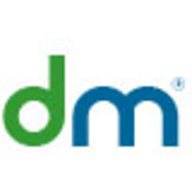

Dotcom-Monitor BrowserView Monitoring and Splunk Observability Cloud are competing in the monitoring and observability services category. Splunk Observability Cloud seems to have the upper hand due to its superior features, appealing to those prioritizing comprehensive functionality, while Dotcom-Monitor stands out for cost-effectiveness and customer support, attracting budget-conscious buyers.
Features: Dotcom-Monitor offers straightforward browser-based testing, versatile monitoring of web applications, and intuitive cloud checks. Splunk Observability Cloud provides advanced analytics, a wide range of integrations, and real-time telemetry, providing a holistic view of system performance. While Dotcom-Monitor offers essential monitoring capability, Splunk caters to more intricate needs with its extensive function set.
Ease of Deployment and Customer Service: Dotcom-Monitor ensures a quick setup with straightforward guides and highly regarded technical support, integrating smoothly into existing systems. Splunk Observability Cloud, though more complex to deploy due to its wide-ranging features, offers robust professional assistance suitable for structured onboarding.
Pricing and ROI: Dotcom-Monitor provides a lower setup cost, delivering a substantial ROI for small to mid-sized enterprises focused on budgets. Splunk Observability Cloud involves a greater upfront investment but offers long-term benefits with its advanced feature set, proving worthwhile for larger enterprises seeking enhanced performance insights and business intelligence.

Splunk Observability Cloud combines log search, data integration, and dashboards for seamless monitoring, enhancing infrastructure visibility and security. Its cloud integration and scalability support diverse environments, improving operational efficiency.
Splunk Observability Cloud offers comprehensive monitoring tools with user-friendly interfaces, enabling end-to-end infrastructure visibility. Its real-time alerting and predictive capabilities enhance security monitoring, while centralized dashboards provide cross-platform visibility. Users benefit from fast data integration and extensive insights into application performance. Despite its advantages, improvements could be made in integration with other tools, data reliability, scalability, and cost management. Users face challenges in configuration complexity and require better automation and endpoint protection features. Enhancing AI integration, alerts, and adaptation for high-throughput services could further improve usability.
What are the key features of Splunk Observability Cloud?In industries like finance and healthcare, Splunk Observability Cloud is implemented for application performance monitoring and infrastructure metrics. Its ability to track incidents and analyze machine data benefits network infrastructure, while distributed tracing and log analysis aid in tackling security threats. Organizations often integrate it for compliance and auditing purposes, enhancing visibility into network traffic and optimizing performance.
We monitor all IT Infrastructure Monitoring reviews to prevent fraudulent reviews and keep review quality high. We do not post reviews by company employees or direct competitors. We validate each review for authenticity via cross-reference with LinkedIn, and personal follow-up with the reviewer when necessary.